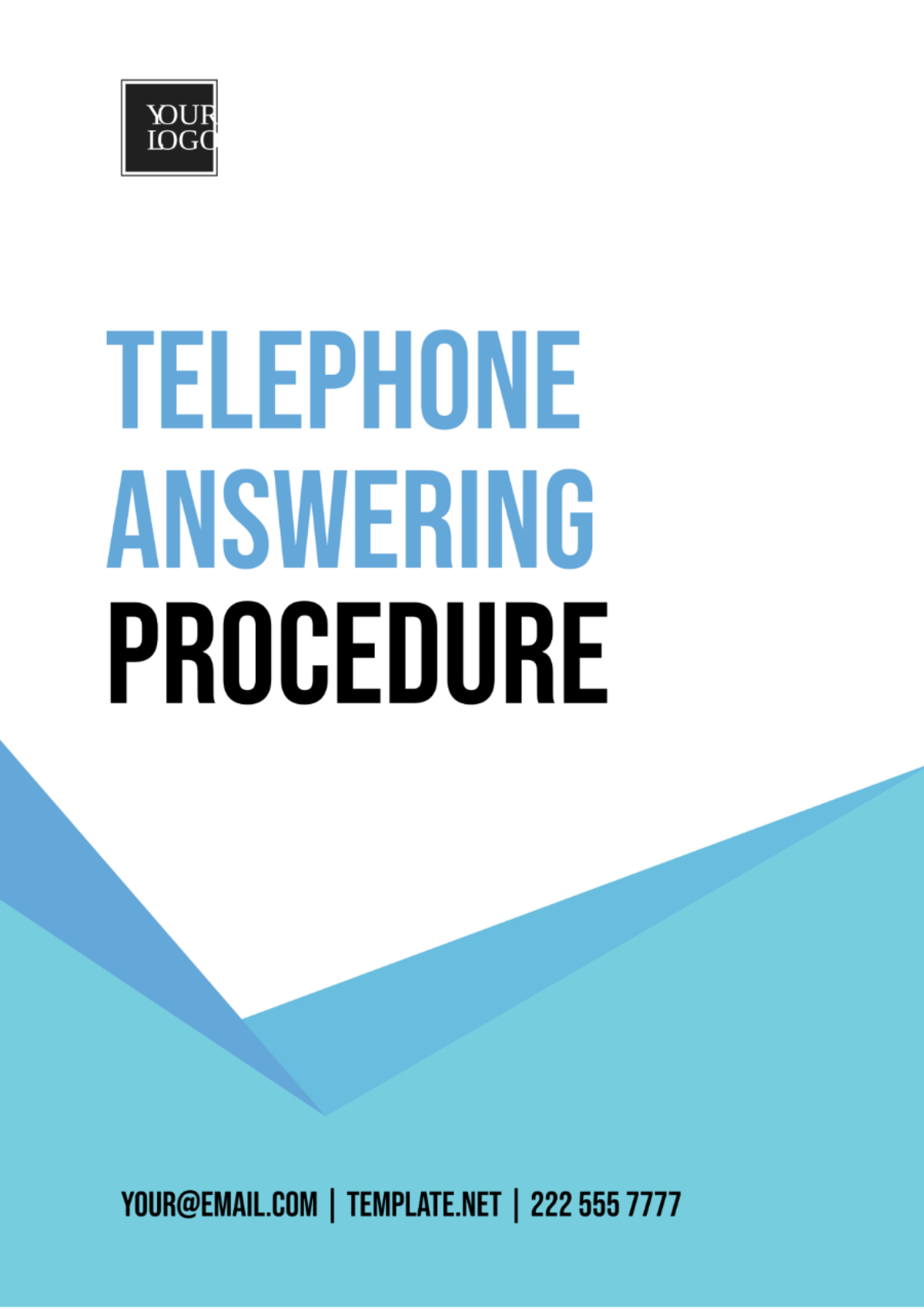Free Telephone Answering Procedure

Introduction:
This Telephone Answering Procedure Template outlines the steps for handling incoming calls effectively and professionally within [YOUR COMPANY NAME]. It provides guidelines for telephone etiquette, call handling procedures, and customer service standards to ensure a positive experience for callers.
Scope:
This procedure applies to all employees responsible for answering and managing incoming calls within [YOUR COMPANY NAME]. It encompasses the process of greeting callers, gathering information, transferring calls, and handling inquiries or requests.
Purpose:
The purpose of this procedure is to establish consistent practices for telephone answering to enhance communication, customer satisfaction, and organizational image. By following this template, [YOUR COMPANY NAME] can ensure that callers receive prompt assistance and courteous service during telephone interactions.
I. Greeting and Identification
Answering Calls: Promptly answer incoming calls within [YOUR COMPANY NAME]'s designated time frame, ideally within three rings.
Use a professional and courteous greeting, such as "Good morning/afternoon/evening, thank you for calling [YOUR COMPANY NAME]. How may I assist you?"
Identification: Identify yourself and the company by stating your name and department, if applicable, to establish credibility and transparency.
Example: "This is [YOUR NAME] from [YOUR DEPARTMENT] at [YOUR COMPANY NAME]. How may I help you today?"
II. Gathering Information
Active Listening: Listen attentively to the caller's request or inquiry without interruption to ensure understanding.
Use verbal cues, such as "I see," "I understand," or "Please continue," to indicate active listening and engagement.
Asking Clarifying Questions: Ask relevant questions to gather necessary information and clarify the caller's needs or concerns.
Use open-ended questions to encourage callers to provide detailed information and express their requirements fully.
III. Providing Assistance
Offering Solutions: Provide appropriate assistance or solutions based on the caller's inquiry or request.
Use knowledge of company products, services, and policies to offer relevant information, guidance, or assistance.
Transferring Calls: If unable to address the caller's needs directly, offer to transfer the call to the appropriate department or individual.
Inform the caller of the transfer and provide any necessary information or instructions for the transfer process.
IV. Closing the Call
Confirmation: Confirm that the caller's inquiry or request has been addressed satisfactorily before ending the call.
Ask if there is anything else you can assist with and express appreciation for the caller's time and patience.
Offering Assistance: Offer additional assistance, such as providing contact information or directing the caller to relevant resources, if needed.
Ensure the caller feels valued and appreciated for reaching out to [YOUR COMPANY NAME].
Additional Reminders and Tips:
Speak clearly and articulately, using a polite and friendly tone throughout the call.
Maintain confidentiality and professionalism when handling sensitive or confidential information.
Take notes during the call to document important details and follow-up actions, if necessary.
Prepared by | Company Name | Department | Date |
|---|---|---|---|
[YOUR NAME] | [YOUR COMPANY NAME] | [YOUR DEPARTMENT] | [DATE] |
- 100% Customizable, free editor
- Access 1 Million+ Templates, photo’s & graphics
- Download or share as a template
- Click and replace photos, graphics, text, backgrounds
- Resize, crop, AI write & more
- Access advanced editor
Transform telephone answering with the Telephone Answering Procedure Template from Template.net. This editable and customizable resource simplifies the creation of professional answering protocols. Tailor procedures to your company's specific needs effortlessly using our intuitive Ai Editor Tool. Enhance customer service and streamline operations with this essential template for telephone answering excellence.





























